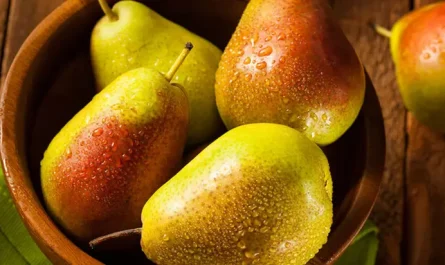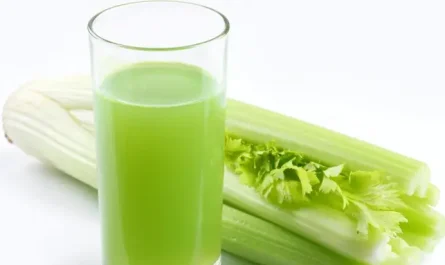Cardiologists have named the healthiest lunch for high blood pressure
Ominously nicknamed the “silent killer” because it often has no obvious symptoms, high blood pressure , or hypertension, is an increasingly common condition.
Eating well writes that if hypertension is not treated, it can lead to heart disease and stroke, so it is important to get it under control in time. Fortunately, changes to your diet and lifestyle can help.
“There is ample evidence that making healthy food choices can increase life expectancy and reduce the risk of heart disease, high blood pressure and diabetes,” says Estelle Jean, MD, a cardiologist at MedStar Montgomery Medical Center in Olney, Massachusetts.
Unfortunately, our fast-paced lifestyles can make switching to healthy eating a challenging task. Skipping lunch may seem appealing to carve out a few extra minutes for work, but it can “lead to excess hunger, which can lead to overeating.”
“An irregular eating pattern can negatively impact your metabolism, leading to an increased risk of metabolic syndrome, high blood pressure and obesity,” says Bradley Server, MD, interventional cardiologist and chief medical officer at VitalSolution.
What’s more, the study found that those who regularly skipped lunch ate less fruits, vegetables, whole grains, seafood and plant proteins-foods that help control blood pressure. Luckily, choosing a heart-healthy lunch option doesn’t have to be complicated.
What to Look for When Choosing a Heart-Healthy Lunch
The DASH diet is considered one of the most effective eating plans for combating high blood pressure. This diet includes fruits, vegetables, low-fat or fat-free dairy products, whole grains, fish, poultry, beans and nuts. On the other hand, she limits her intake of saturated fat, additional sugar and salt.
Include a variety of vegetables in your diet
The DASH diet recommends four to five servings of fruits and vegetables, so make room for them on your dinner plate. Vegetables contain many beneficial nutrients that lower blood pressure, such as fiber, vitamin C and potassium.
“Choosing a lunch that includes at least one colorful vegetable—tomato, carrot, beet, or eggplant—and one dark leafy green—kale, spinach, or arugula-will help you get the amount of potassium you need to maintain optimal blood pressure levels,” says Catalina Ruse of Top. Nutrition Coaching. “Potassium is essential for maintaining high blood pressure. This mineral helps relax the walls of blood vessels, reducing tension and lowering blood pressure.”
Reduce saturated fat
Although the DASH diet is low in saturated fat and trans fat, it is not low-fat. Instead, she encourages consumption of unsaturated fats such as omega-3 fatty acids, which are found in nuts, seeds and vegetable oils such as olive, avocado and sesame. Opting for plant-based proteins such as tofu, beans and legumes more often is a great way to keep saturated fat in check.
Pack your dish with flavor, but not with sodium.
If you’re short on time and constantly order lunch or grab something from the vending machine, you’re likely exceeding your daily sodium allowance. The American Heart Association recommends limiting your sodium intake to 2,300 mg sodium, but ideally 1,500 mg per day to improve blood pressure. Eating lunch from home can significantly reduce your sodium intake. Most of the sodium in people’s diets comes from restaurants or packaged foods, not salt shakers.
Best Lunch for High Blood Pressure
Our pick for the best lunch for high blood pressure, the grain bowl is made with fiber-rich quinoa that’s topped with beets, avocado, sunflower seeds, and a simple dressing of hummus and lemon juice.
“This dish ticks several boxes for heart health,” says Veronica Routh, RD, owner of The Heart Dietitian in Ontario, Canada. “Ideally, a well-formulated heart-healthy lunch should include a good combination of whole grains, plant-based proteins, healthy fats and plenty of fruits and vegetables. These components work together to provide a range of nutrients that support heart health.”
Potassium
Potassium and sodium work in tandem to regulate blood pressure levels. Sodium increases blood pressure by promoting fluid retention in the body, and potassium counteracts this by promoting sodium excretion in urine and relaxing blood vessel walls.
Cellulose
Most people don’t get enough fiber in their diet. However, we know that fiber has many health benefits.
“Diets high in fiber may protect against coronary heart disease by lowering blood pressure and improving cholesterol levels,” Jean says.
Studies have shown that people with hypertension whose diets are high in fiber have lower blood pressure levels than those whose diets are low in fiber.
May promote healthy blood vessels
Like trying to push water through a narrow tube, blood pressure rises when blood vessels lose flexibility with age or become narrow due to plaque buildup. Certain foods, such as the beets in these grain bowls, can help dilate blood vessels, allowing blood to flow freely.
“Nitric oxide, derived from beets, increases the flow of oxygen-rich blood throughout the circulatory system, helping regulate blood pressure and overall circulation. Studies have shown that drinking beets or beet juice can effectively lower blood pressure in people with hypertension,” says Roose.



